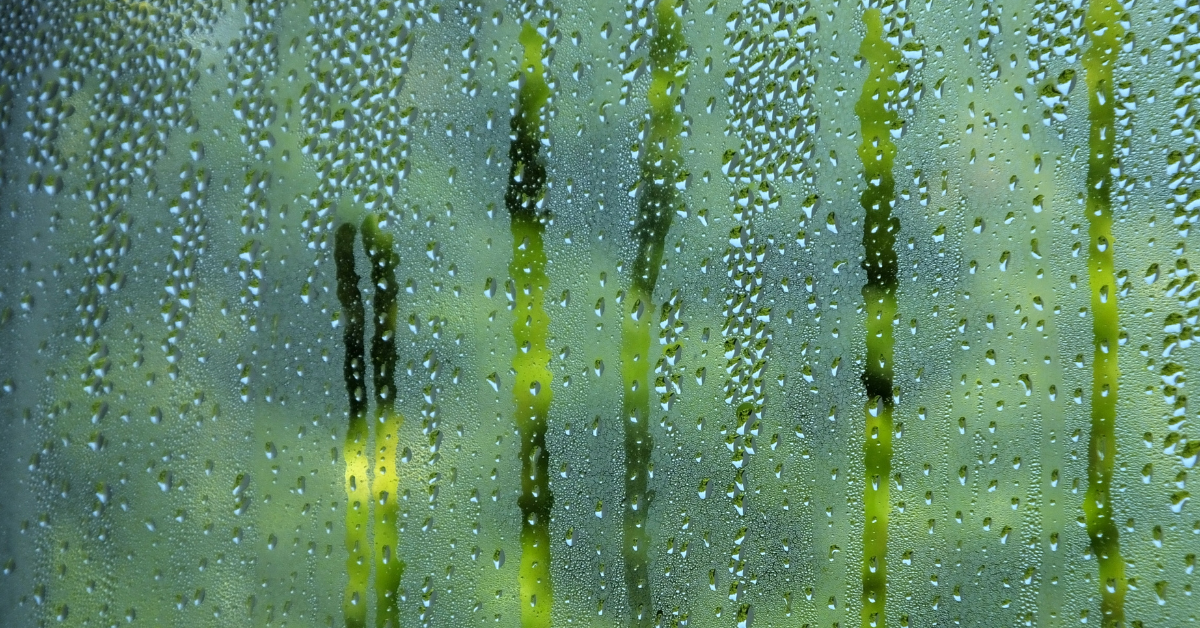CCB License#218431
Posted by: Elite Restoration on August 15, 2022
Hot Outside and Cold Inside – How Condensation Can Cause Problems in Your Home
Condensation can form anywhere where warm and cold air collide. You may see it most often on the side of drink containers or even on your bathroom mirror after a long, hot shower. While condensation in small amounts isn’t something you should be worried about inside your home but it could be an indicator of a larger issue.

Condensation doesn’t just show up in the summertime. Warm air inside your home and colder air outside of your home can also cause condensation to form, but it will usually freeze on your windows or doors rather than drip like it does in the summer. If you notice frosty areas of your home in the winter and drippy or wet areas in your home in the summer, it could be a sign of an insulation issue. Double check to see if your windows and doors have weather strips or have adequate insulation around them to keep them at a reasonable temperature.
You can also consider running a dehumidifier during the hot summer months to pull some of the moisture out of the air. Running a dehumidifier can stop that moisture from settling in on your walls, carpet, furniture, and other surfaces and prevent giving your home a musty smell.
If you find that the condensation is especially bad in your bathrooms and kitchen, you may want to consider adding a fan or other appliance to help circulate the air. This movement can help prevent moisture from settling in once place and causing water staining or damage from forming.
Excess water in your carpets, walls, ceilings, or windows can cause water damage down the road in your home. If you notice a strong wet or musty smell in your home, chances are this water damage has already started. Call our team of professionals to come and assess your home for the source of this water damage. We can provide helpful tips and fixes to make sure the source of the water is stopped and no more damage occurs!
Frequently Asked Questions
While some homeowners may attempt DIY installation, professional installation ensures proper coverage and safety compliance, minimizing the risk of issues such as settling or compression.
While some tasks can be DIY, such as cleaning and disinfection, professional remediation is recommended for complex issues or extensive contamination.
There are a few different methods of achieving this, the most common is in part with re-roofing the mobile home after blowing insulation into the attic cavity.
Yes, we provide warranties for both labor and materials, including 20-year warranties on encapsulation systems.
Most homeowner's policies cover most water damages, but not all water damages are created equal. There can be a lot of exceptions to coverage depending on the intricacies of your policy. This is why it's a good idea to be familiar with your policy and call your agent right away when damage occurs.
As with all insurance related questions, the answer is that it depends on your coverage. Usually, though, the answer is yes. While there are some types of water damages that aren't covered by standard policies or reasons your policy might not cover the damage, if the water damage is covered by your policy the drying process will also be covered.
A good portion of water damage can be prevented by proper household maintenance. Routine plumbing maintenance, as well as sump pump and appliance maintenance, are effective ways to avoid preventable damages. If you live in a cold climate, preparing your home for the winter can also help avoid damage. Finally, it's a good idea to regularly check the exterior of your home, particularly your roof, for damage to ensure water isn't unexpectedly leaking into your home.
Seal any potential entry points, such as gaps in the roof or vents, and trim overhanging tree branches.
DIY soot removal is not recommended. Commercially available products can actually cause permanent damage to surfaces. Soot itself is primarily oil-based, but that residue also contains toxic, possibly biohazard contaminants.
Identifying the source of the water damage is one of the first steps in both the insurance claim process and before beginning to dry out and repair the damaged areas. After all, if you replace a sagging, wet ceiling that was caused by a roof leak but don't fix the roof, too, the next rainstorm will start the cycle all over again. The buckling to your hardwood floor could be caused by a leaking pipe. We will pinpoint the exact cause of your water damage and make sure the source is repaired. We make sure your restoration job is done right the first time.
Related Posts
Seasonal Survival: How to Prepare Your Home for Unexpected Weather Events
In the face of increasingly unpredictable weather, ensuring the safety and resilience of your home has never been more critical. From torrential rains (more)
Top 5 Innovations in Water Damage Restoration That Are Revolutionizing the Industry
As a homeowner or business owner, understanding the advancements in water damage restoration can preserve property integrity and prevent exorb (more)
